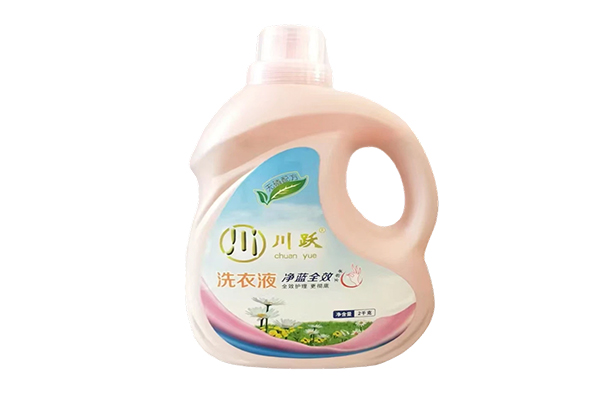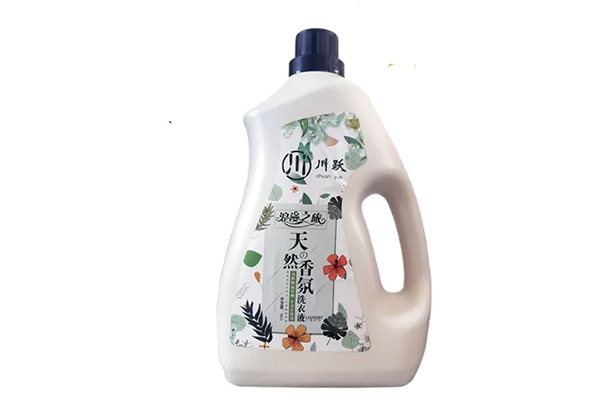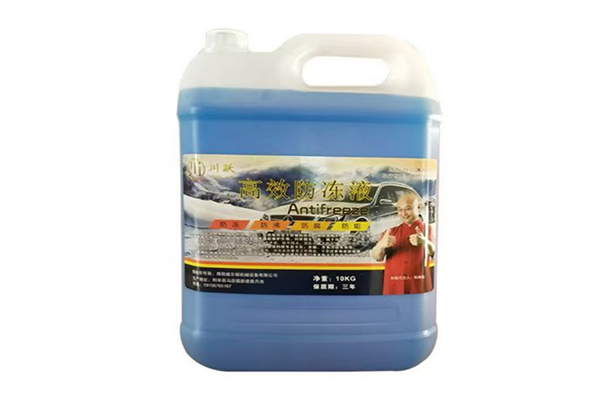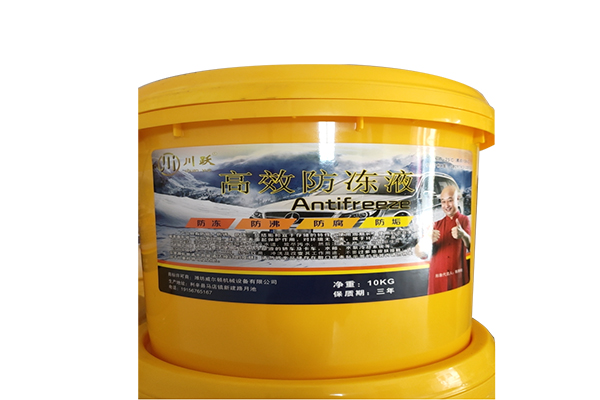How do phosphate-free laundry detergents penetrate deep into fabrics and break down stubborn stains?
Release Time : 2025-09-23
With everyday wear, clothes inevitably pick up stains such as sweat, oil, dust, and food residue. These stains not only cling to the surface but also penetrate deep into the fabric, making them difficult to completely remove with physical friction alone. The key to phosphate-free laundry detergent's deep cleansing lies in its scientific formula and unique stain removal mechanism. Rather than simply "washing" away stains, phosphate-free laundry detergents actively penetrate fabrics, remove dirt, and prevent redeposition through a series of chemical and physical actions, ultimately cleaning from the inside out. Its core strength lies in the synergistic effect of surfactants, water softeners, natural essential oils, and various functional additives.
1. Surfactants: The "Clean Pioneers" That Deeply Penetrate Fabrics
The core ingredient of phosphate-free laundry detergent is surfactant, a molecule with an amphiphilic structure: one end is hydrophilic and the other is lipophilic. When dissolved in water, the surfactant molecules rapidly reduce the surface tension of the water, making it easier for the detergent to wet the fabric and break through the barrier between the stain and the fabric. During the washing process, the oleophilic ends actively penetrate oily stains, encapsulating them into tiny "micelles," while the hydrophilic ends face outward and bind to water, freeing the oil from the fibers and suspending it in the water, ultimately washing it away with the current. This process, known as "emulsification," is key to breaking down stubborn oil stains. Surfactants also penetrate the micropores of fibers, loosening embedded particulate dirt and, through solubilization, dissolving insoluble organic matter within the micelles for a deep clean.
2. Water Softeners: Solve the Hard Water Problem and Improve Cleaning Efficiency
Tap water often contains metal ions such as calcium and magnesium, creating "hard water." These ions combine with surfactants to form insoluble precipitates, reducing cleaning power and leaving residue on clothing, causing them to become hard and gray. The water softeners in phosphate-free laundry detergents effectively chelate these metal ions, rendering them inactive and preserving the effectiveness of the surfactants. While softening the water, water softeners also prevent dirt from redepositing on clothes during the wash cycle, ensuring truly "clean" laundry. This is especially effective in hard water areas.
3. Natural Essential Oils and pH Balance: Gentle Cleansing, Protects Clothes and Skin
Unlike traditional highly alkaline laundry detergents, high-quality phosphate-free laundry detergents utilize natural essential oils and pH-balanced technology to achieve a pH close to neutral or slightly acidic, matching the physiological environment of human skin and most natural fibers. This gentle formula not only effectively cleans but also minimizes damage to the fiber structure, preventing fading, warping, and brittleness. Natural essential oils not only impart a fresh and pleasant fragrance to clothes, but some also possess natural antibacterial and antioxidant properties, further enhancing washing results. Furthermore, the pH-balanced system is gentler on hands, reducing dryness and irritation during washing, truly achieving "clean clothes and protect hands."
4. Synergistic Multi-Functional Effects: Color Fixation, Antibacterial, and Softening All in One
Phosphate-free laundry detergents have long transcended simple cleaning. The added color-protecting ingredients form a protective film on the fabric surface, reducing pigment loss during the wash process, making it particularly effective for dark and brightly colored clothing. Antimicrobial agents effectively inhibit common bacteria such as E. coli and Staphylococcus aureus, ensuring fabric hygiene and making it particularly suitable for underwear and baby clothing. Fabric softeners reduce friction while cleaning, leaving clothes fluffier and softer after washing and reducing static.
5. Low-foaming, easy-rinsing: Highly effective cleaning with no residue for added peace of mind
Phosphate-free laundry detergents with low-foaming formulas perform particularly well in front-loading washing machines. Less foam means easier rinsing, reducing the need for multiple rinses and saving water and energy. More importantly, their low-foaming, easy-rinsing properties ensure no detergent residue, preventing chemical residue from causing skin allergies or irritation, making them particularly suitable for people with sensitive skin and those with infants and young children.
The ability of phosphate-free laundry detergents to penetrate deep into fabrics and break down stubborn stains isn't achieved through brute force, but through science. It uses surfactants as a vanguard, water softeners as a backup, and natural essential oils, color-protecting factors, and antibacterial ingredients to complete a precise "decontamination operation" in a gentle acid-base balance system. It not only cleans clothes, but also protects color, fibers, and health.
1. Surfactants: The "Clean Pioneers" That Deeply Penetrate Fabrics
The core ingredient of phosphate-free laundry detergent is surfactant, a molecule with an amphiphilic structure: one end is hydrophilic and the other is lipophilic. When dissolved in water, the surfactant molecules rapidly reduce the surface tension of the water, making it easier for the detergent to wet the fabric and break through the barrier between the stain and the fabric. During the washing process, the oleophilic ends actively penetrate oily stains, encapsulating them into tiny "micelles," while the hydrophilic ends face outward and bind to water, freeing the oil from the fibers and suspending it in the water, ultimately washing it away with the current. This process, known as "emulsification," is key to breaking down stubborn oil stains. Surfactants also penetrate the micropores of fibers, loosening embedded particulate dirt and, through solubilization, dissolving insoluble organic matter within the micelles for a deep clean.
2. Water Softeners: Solve the Hard Water Problem and Improve Cleaning Efficiency
Tap water often contains metal ions such as calcium and magnesium, creating "hard water." These ions combine with surfactants to form insoluble precipitates, reducing cleaning power and leaving residue on clothing, causing them to become hard and gray. The water softeners in phosphate-free laundry detergents effectively chelate these metal ions, rendering them inactive and preserving the effectiveness of the surfactants. While softening the water, water softeners also prevent dirt from redepositing on clothes during the wash cycle, ensuring truly "clean" laundry. This is especially effective in hard water areas.
3. Natural Essential Oils and pH Balance: Gentle Cleansing, Protects Clothes and Skin
Unlike traditional highly alkaline laundry detergents, high-quality phosphate-free laundry detergents utilize natural essential oils and pH-balanced technology to achieve a pH close to neutral or slightly acidic, matching the physiological environment of human skin and most natural fibers. This gentle formula not only effectively cleans but also minimizes damage to the fiber structure, preventing fading, warping, and brittleness. Natural essential oils not only impart a fresh and pleasant fragrance to clothes, but some also possess natural antibacterial and antioxidant properties, further enhancing washing results. Furthermore, the pH-balanced system is gentler on hands, reducing dryness and irritation during washing, truly achieving "clean clothes and protect hands."
4. Synergistic Multi-Functional Effects: Color Fixation, Antibacterial, and Softening All in One
Phosphate-free laundry detergents have long transcended simple cleaning. The added color-protecting ingredients form a protective film on the fabric surface, reducing pigment loss during the wash process, making it particularly effective for dark and brightly colored clothing. Antimicrobial agents effectively inhibit common bacteria such as E. coli and Staphylococcus aureus, ensuring fabric hygiene and making it particularly suitable for underwear and baby clothing. Fabric softeners reduce friction while cleaning, leaving clothes fluffier and softer after washing and reducing static.
5. Low-foaming, easy-rinsing: Highly effective cleaning with no residue for added peace of mind
Phosphate-free laundry detergents with low-foaming formulas perform particularly well in front-loading washing machines. Less foam means easier rinsing, reducing the need for multiple rinses and saving water and energy. More importantly, their low-foaming, easy-rinsing properties ensure no detergent residue, preventing chemical residue from causing skin allergies or irritation, making them particularly suitable for people with sensitive skin and those with infants and young children.
The ability of phosphate-free laundry detergents to penetrate deep into fabrics and break down stubborn stains isn't achieved through brute force, but through science. It uses surfactants as a vanguard, water softeners as a backup, and natural essential oils, color-protecting factors, and antibacterial ingredients to complete a precise "decontamination operation" in a gentle acid-base balance system. It not only cleans clothes, but also protects color, fibers, and health.







